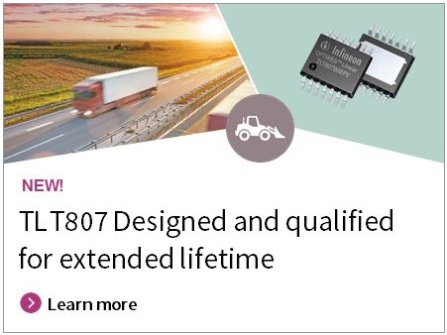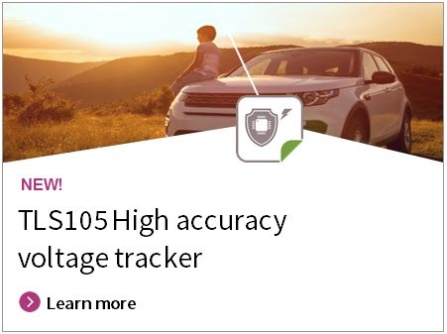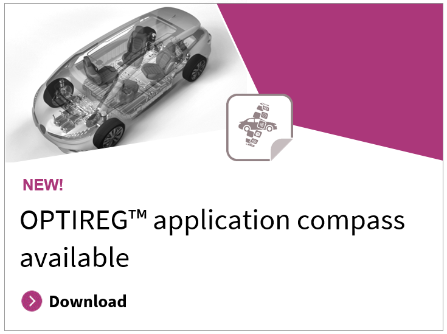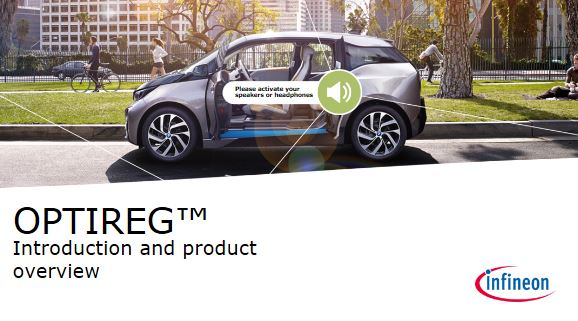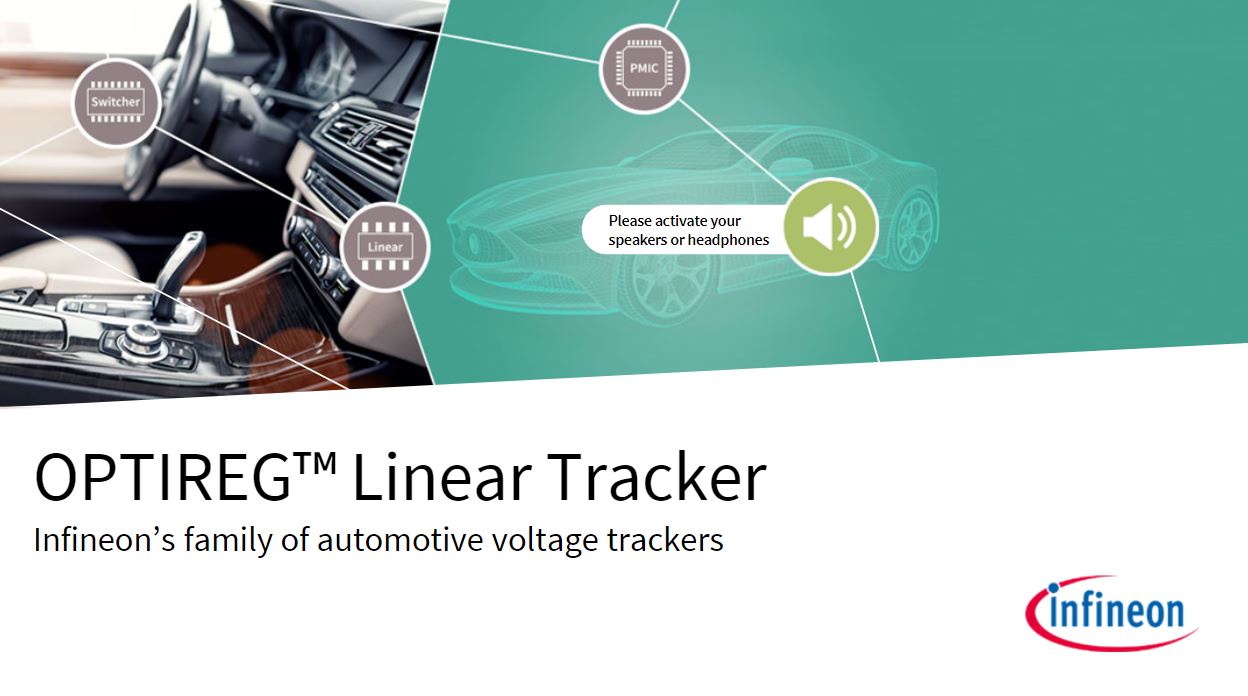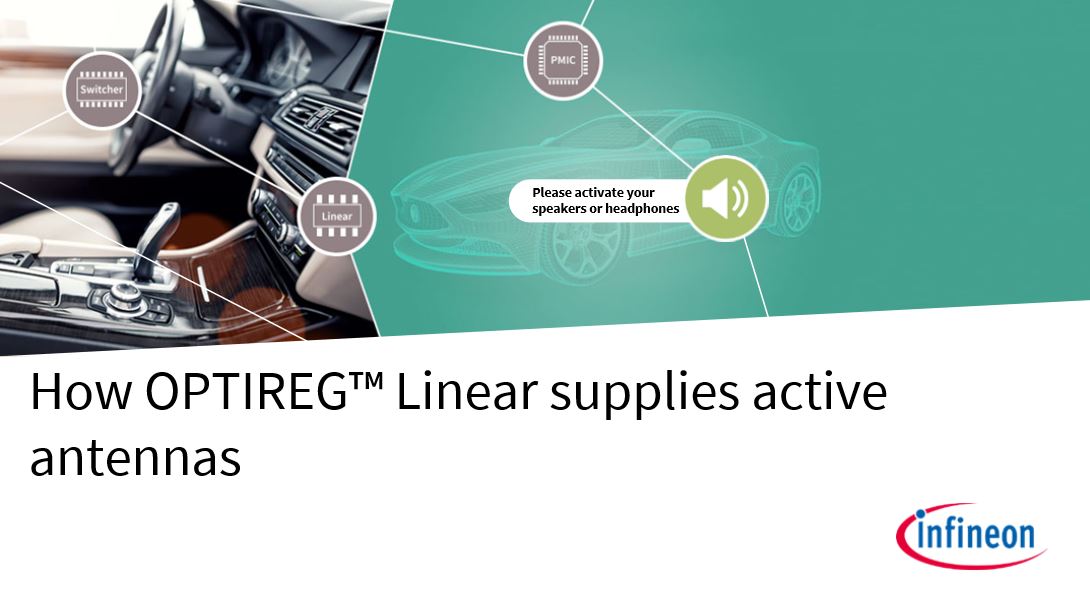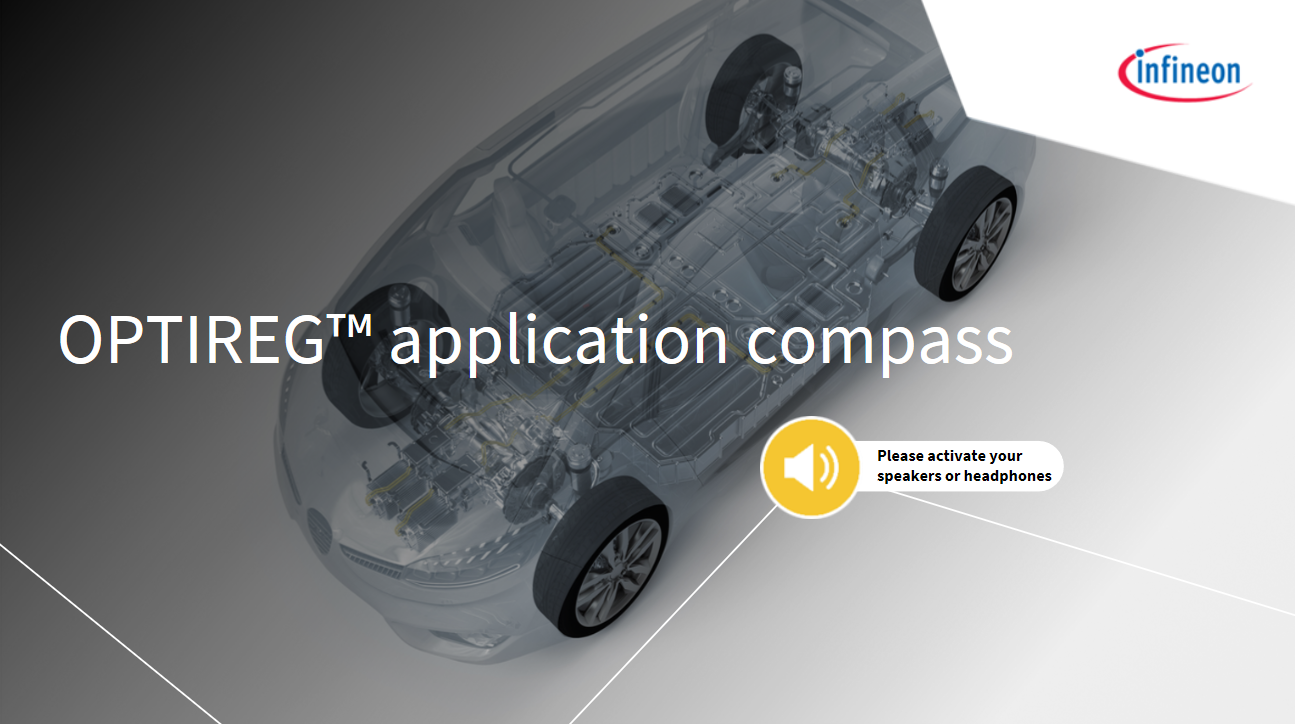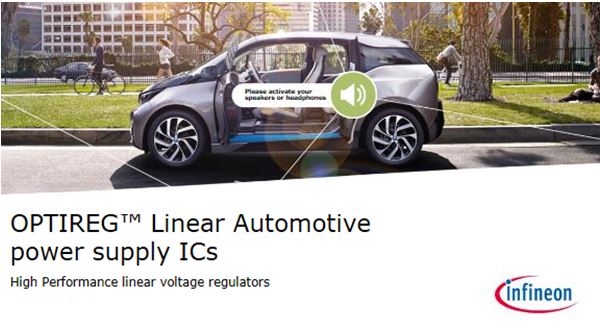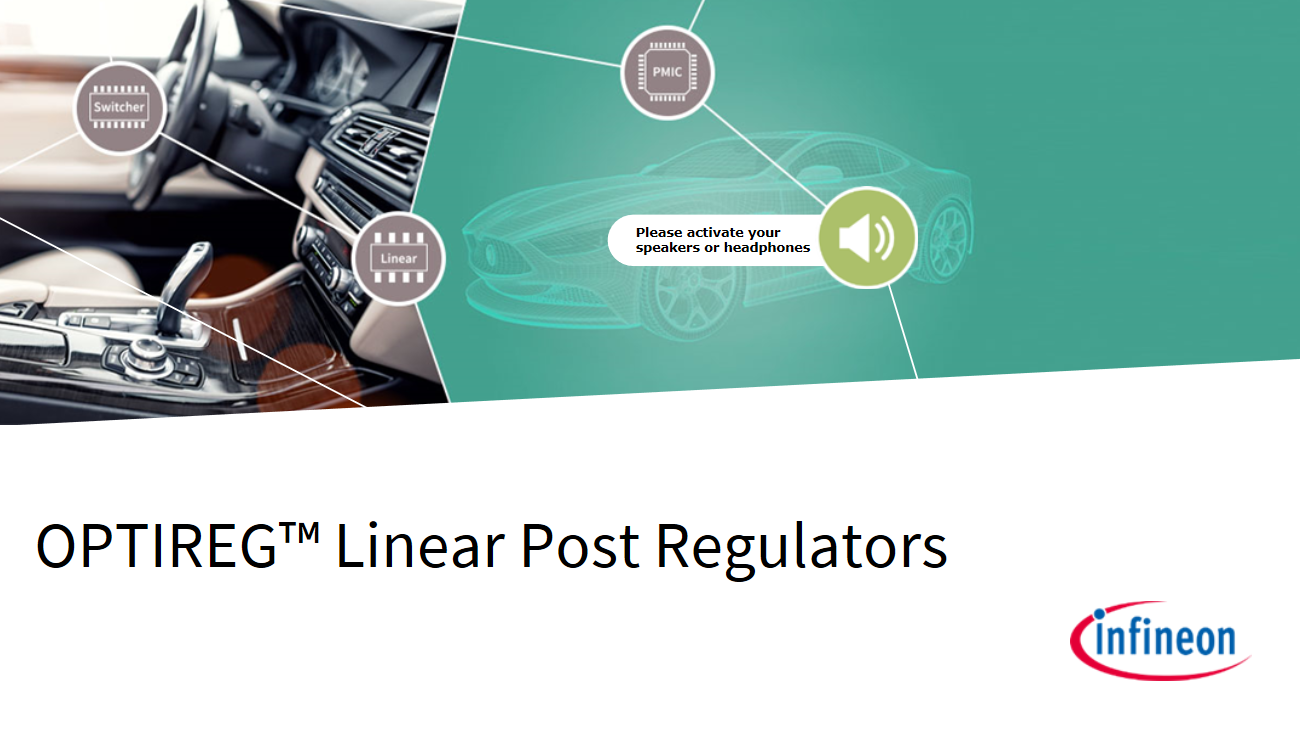Linear Voltage Regulator (LDO)
Simple and versatile low-dropout linear voltage regulators
Linear Voltage Regulator (LDO) subcategories
Collapse all subcategories Expand all subcategoriesEasy-to-use ultra LDO linear voltage regulator ICs
Low dropout (LDO) linear voltage regulators are easy-to-use ICs that provide simple power supply solutions. Infineon offers a wide range of LDO regulators for both industrial and automotive technologies. Typical linear voltage regulator applications include transceivers, microcontrollers, active antennas, and sensors. Linear voltage regulators (LDO) from Infineon are equipped with a variety of integrated features, such as wide voltage range, current sense and protection features, and ultra-low quiescent current. They are low-noise and consist of small internal components for easy customer application.
Infineon offers a range of low dropout linear regulator IC packages, including tiny leadless packages, which can be used for industrial applications and automotive applications like EPS, transmission, HVAC, dashboards, body control modules, ADAS, telematics, and CAV. All of Infineon’s linear voltage regulators (LDO) offer a robust design, which ensures high quality and reliability throughout the entire lifespan of the product.
Wide range of integrated high-linear voltage regulator ICs features
Linear voltage regulators can convert a wide range of direct input currents into a single regulated output current of a lower voltage. The input voltage must be higher than the output voltage and have a difference of at least 2 V between the two voltage levels. For example, a 5 V low dropout voltage regulator could be used to convert 12 V into 5 V. However, it could not be used to convert 3.3 V into 5 V, as the output voltage would be higher in this case.
Low dropout linear voltage regulators can also function with a dropout range of less than 2 V. They offer a simple circuit layout consisting of very few components. While this makes them smaller and easy to use, they are less efficient than switching regulators and any unused energy will dissipate as heat from the regulator. To prevent possible overheating, Infineon's linear voltage regulators (LDO) have low quiescent currents, a temperature range of –40°C - +125°C, and feature integrated thermal shutdown and overtemperature protection. They also offer additional safety measures, such as overvoltage and short-circuit protection, load protection, and reverse polarity protection.
Explore the different types of linear voltage regulators
Infineon offers several types of linear voltage regulators (LDO) as part of the OPTIREG™ product series to ensure for straightforward, application-specific customer ICs design. This includes multiple variants of linear voltage regulators (LDO), including high-precision tracking linear voltage regulators, variable-linear voltage regulators, ultra-low quiescent current voltage regulators (LDO), and high-performance voltage regulators.
Unlike switching voltage regulators, low quiescent current regulators (LDO) cannot be used with buck or boost converters. Buck and boost converters enable the regulators to “step down” or “step up” the voltage respectively. These cannot work with linear voltage regulators as the input voltage must always remain greater than the output voltage.
Low dropout linear and variable linear voltage regulators
Low voltage linear: Infineon's OPTIREG™ product family features a wide range of low dropout (LDO) linear voltage regulators. A dropout voltage indicates the lowest input voltage at which a linear regulator will function. Unlike standard linear voltage regulators, low dropout regulators can function with a dropout voltage of less than 2 V.
Variable linear: Infineon offers a selection of variable linear voltage regulators (LDO) (also called adjustable voltage regulators), which are suitable for industrial applications. This type of linear voltage regulators convert an input voltage within a specific range to an output voltage required by the load. The output voltage is adjustable which makes low dropout adjustable voltage regulators a highly flexible option for system designers.
Linear voltage tracking and high-performance linear voltage regulator ICs
Linear voltage tracking regulators: These are high-precision voltage regulators designed to supply off-board loads for electronics, such as sensors, microphones, satellite ECUs, and small lamps. These types of linear regulators do not have their own internal voltage reference, so they must accurately track an externally provided voltage reference. The external voltage enables precise data acquisition from the sensor.
High-performance linear voltage regulator ICs: High-performance linear voltage regulators are designed for direct battery connection. They feature a wide input voltage range for extended performance. These types of linear voltage regulators are suitable for applications such as automotive on-board sensors, microcontrollers, CAN transceivers, microphones, and low-load LEDs.
Low quiescent linear voltage regulators (LDO)
The quiescent current is another import characteristic of linear voltage regulators (LDO). A linear voltage regulator requires a low quiescent current to operate its internal circuit when the system is in standby mode. In this idle state, there is little to no output load required. However, the LDO will continue to draw a quiescent current for preparation of a load. Quiescent current will generally dissipate in the form of heat while the system remains idle.
Infineon offers a wide range of low quiescent DC current regulators (LDOs), including 3.3 V, 5 V, and ultra-low quiescent current LDOs. Regulators with a low quiescent current are useful for a variety of applications, as they consume less energy and extend the lifespan of battery-operated systems.
Find information relating to the planned long-term availability of semiconductor products “Longevity” for Automotive Smart Power products.
For more information on low dropout linear voltage regulators from Infineon, and other electronic components within our range explore our support section.
LDO stands for low dropout and is used to refer to linear voltage regulator ICs, with an optimized dropout voltage. An LDO converts a higher input voltage to a lower output voltage by making use of a regulated pass-transistor. An easy analogy to this method of voltage conversion is to consider an electronically controlled variable resistor. The resistance is automatically adjusted so that at a given output current the voltage drop is exactly the value required to generate the desired output voltage.
Infineon’s LDO families in an overview:
High performance regulators are optimized for direct battery connection. They feature an extended input voltage range for cranking conditions, ultra-low quiescent current during stand-by and excellent line transient performance.
Voltage trackers are designed to supply off-board loads, for example sensors. As trackers do not have their own internal voltage reference, they accurately track an externally provided reference voltage. This external voltage is normally derived from the microcontroller unit (MCU) supply and allows precise data acquisition from the sensor. Trackers feature various protection mechanisms to accommodate for broken cable faults and short-to-battery conditions.
Post Regulators are used in combination with a pre-regulator. They come with excellent PSRR to generate a clean output voltage and are cost and space effective. A combination of post- and pre-regulator increases the overall system efficiency substantially. Optimally suited pre-regulators for Infineon post-regulator devices are Infineon OPTIREG™ Switchers or the Infineon OPTIREG™ PMICs. For more information on Infineon’s switched-mode automotive converters please visit www.Infineon.com/OPTIREG.
OPTIREG™ Linear Application Specific:
Application specific LDOs are a collection of highly specialized LDOs. Examples include active antenna supplies and LDOs for usage in 24 V systems.
General purpose LDOs refer to Infineon’s well-established and versatile LDOs. They are suitable for a broad range of general-purpose applications.
LDOs for a broad range of industrial applications.
An LDO is a simple, yet robust and cost effective means to generate a stable output voltage whilst supplying constant load currents of up to 500 mA depending on the application and the LDO used. An architecture containing an LDO requires minimal external components, keeping the overall system complexity and BOM cost low.
To operate an LDO, only a minimal amount of external components are required. Essential for all LDOs are an input capacitor for decoupling and an output capacitor for buffering line transients and obtaining LDO stability. Depending on the LDO topology, a diode may be required to protect the LDO during reverse polarity conditions.
The efficiency of an LDO is defined as the ratio between output power (POUT) and input power (PIN). To calculate the input power accurately, the quiescent current (Iq) also has to be taken into account.
The quiescent current is the current required to power the internal circuitry of the LDO.
The power loss, or dissipated power, is defined by the difference between input power and output power.
To learn more about LDOs please refer to the Infineon “What The Designer Should Know” - Guide

